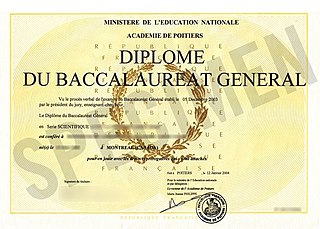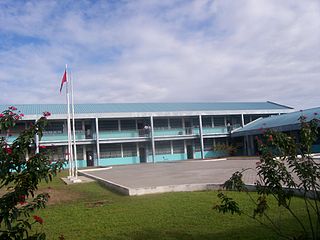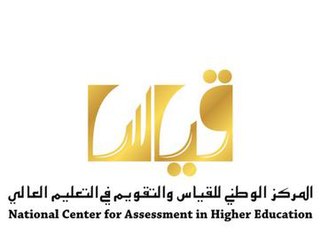
Matura or its translated terms is a Latin name for the secondary school exit exam or "maturity diploma" in various European countries centered around the former Austro-Hungarian Empire, including Albania, Austria, Bosnia and Herzegovina, Bulgaria, Croatia, Czech Republic, Hungary, Italy, Kosovo, Liechtenstein, Montenegro, North Macedonia, Poland, Serbia, Slovakia, Slovenia, Switzerland and Ukraine.

The baccalauréat, often known in France colloquially as the bac, is a French national academic qualification that students can obtain at the completion of their secondary education by meeting certain requirements. Though it has only existed in its present form as a school-leaving examination since Emperor Napoleon Bonaparte's implementation on March 17, 1808, its origins date back to the first medieval French universities. According to French law, the baccalaureate is the first academic degree, though it grants the completion of secondary education. Historically, the baccalaureate is administratively supervised by full professors at universities.
The eleven-plus (11+) is a standardised examination administered to some students in England and Northern Ireland in their last year of primary education, which governs admission to grammar schools and other secondary schools which use academic selection. The name derives from the age group for secondary entry: 11–12 years.
The California High School Proficiency Exam (CHSPE) was an early exit testing program established under California law. Testers who passed the CHSPE received a high school-equivalent diploma from the California State Board of Education. All individuals and institutions subject to California law that require a high school diploma are required to accept the CHSPE diploma as requirement fulfillment. The U.S. Office of Personnel Management has ruled it acceptable in federal civilian employment applications, and the U.S. Department of Education recognizes the CHSPE as a high school diploma equivalent for various purposes, including financial aid applications.

The Hong Kong Certificate of Education Examination was a standardised examination between 1974 and 2011 after most local students' five-year secondary education, conducted by the Hong Kong Examinations and Assessment Authority (HKEAA), awarding the Hong Kong Certificate of Education secondary school leaving qualification. The examination has been discontinued in 2012 and its roles are now replaced by the Hong Kong Diploma of Secondary Education as part of educational reforms in Hong Kong. It was considered as the equivalent of the GCSE in the United Kingdom.

The Hong Kong Advanced Level Examination, or more commonly known as the A-level, conducted by the Hong Kong Examinations and Assessment Authority (HKEAA), was taken by senior students at the end of their matriculation in Hong Kong between 1979 and 2012. It was originally the entrance examination in University of Hong Kong until the introduction of the Joint University Programmes Admissions System (JUPAS) in 1992, which made it the major university entrance examination until academic year 2011/2012.
The Independent School Entrance ExaminationISEE online page (ISEE) is an entrance exam used by many independent schools and magnet schools in the United States. Developed and administered by the Educational Records Bureau (ERB), the ISEE has four levels: the Primary level, for entrance to grades 2–4; Lower level, for entrance in grades 5–6; Middle level, for entrance in grades 7–8; Upper level, for entrance in grades 9–12. All levels consist of five sections: Verbal Reasoning, Quantitative Reasoning, Reading Comprehension, Mathematics Achievement, and a 30-minute essay. The ISEE can be seen as a parallel to the Secondary School Admission Test, or SSAT. It is currently administered by Measurement Incorporated.

Penilaian Menengah Rendah was a Malaysian public examination targeting Malaysian adolescents and young adults between the ages of 13 and 30 years taken by all Form Three high school and college students in both government and private schools throughout the country from independence in 1957 to 2013. It was formerly known as Sijil Rendah Pelajaran. It was set and examined by the Malaysian Examinations Syndicate, an agency under the Ministry of Education.
The Secondary School Admission Test (SSAT) is an admission test administered by The Enrollment Management Association in the United States to students in grades 3–11 to provide a standardized measure that will help professionals in independent or private elementary, middle, and high schools to make decisions regarding student test taking.
Primary School Achievement Test, also known as Ujian Pencapaian Sekolah Rendah, was a national examination taken by all students in Malaysia at the end of their sixth year in primary school before they leave for secondary school. It is prepared and examined by the Malaysian Examinations Syndicate, an agency that constitutes the Ministry of Education.
The Connecticut Mastery Test, or CMT, is a test administered to students in grades 3 through 8. The CMT tests students in mathematics, reading comprehension, writing, and science. The other major standardized test administered to schoolchildren in Connecticut is the Connecticut Academic Performance Test, or CAPT, which is given in grade 10. Until the 2005–2006 school year, the CMT was administered in the fall; now it is given in the spring.
Education in Jamaica is primarily modeled on the British education system.
The Psychometric Entrance Test (PET) – commonly known in Hebrew as "ha-Psikhometri" – is a standardized test that serves as an entrance exam for institutions of higher education in Israel. The PET covers three areas: quantitative reasoning, verbal reasoning and English language. It is administered by the National Institute for Testing and Evaluation (NITE) and plays a considerable role in the admissions process. A score combining students' performance on the PET with the average score of their high school matriculation tests has been found to be a highly predictive indicator of students' academic performance in their first year of higher education.

Debe Secondary School is a co-educational high school first established in 2000 which offers forms 1-6. It is situated in south Trinidad in Debe. The school's motto is Seize the Day.

Bishop Anstey High School (BAHS), also known as Bishop Anstey or St. Hilary's, is a government-assisted all-girls secondary school in Port of Spain, Trinidad and Tobago. It was founded by the Anglican Bishop Arthur Henry Anstey and opened on January 13, 1921. The school is governed by a Board of Management appointed and chaired by the Bishop of Trinidad and Tobago. Its assets are controlled and managed by The Bishop Anstey Association.

The ICFESexamination, or Saber 11, is a high school exit examination administered annually in grade 11 in Colombian high schools. The exam is standardized, similar to the SAT and ACT examinations taken by high school students in the United States. The purpose of the exam is to evaluate students' aptitude in five subjects: critical reading, mathematics, social studies, science, and English. Each exam question has four multiple-choice answers, except for the English section which provides between three and eight possible answers for each question.

Measurement is derived from the verb 'to measure' which means to assess something; in Arabic 'yaqees' 'measure' has the meaning of comparing something to something else. In this sense, measurement is a daily practice that manifests itself in all our assessment activities, whether we assess concrete things in terms of size and color, or abstract things such as human relations. The ultimate goal of 'measuring' something is to assess ourselves in comparison to everything else in the world.

The Finnish Matriculation Examination is the matriculation examination taken at the end of secondary education to qualify for entry into university. In practice, the test also constitutes the high school's final exam(s), although there is a separate diploma on graduating from high school, based not on the exam, but on the grades of individual courses. Since 1919, the test has been arranged by a national body, the Matriculation Examination Board. Before that, the administration of the test was the responsibility of the University of Helsinki.
Advanced Placement (AP) International English Language is an AP Examinations course managed by Educational Testing Service (ETS) with the sponsorship of the College Board in New York. It is designed for non-native speakers to prepare for studying in an English-speaking university, particularly in North America. The course also gives students a chance to earn college credit. The three-hour exam assesses four language skills: listening, reading, writing, and speaking. The test paper has two sections: multiple-choice questions and free-response questions. APIEL committee consists of high school and university English teachers from Belgium, China, France, Germany, Switzerland, and the United States.

St. Joseph's Convent, Port of Spain is a government-assisted all-girls Roman Catholic secondary school in Port of Spain, Trinidad and Tobago. It was founded in 1836 by Sisters of St. Joseph of Cluny, and is the oldest continuous secondary school in Trinidad and Tobago. It celebrated its 180th anniversary in 2016. The school is one of the best performing schools in the Caribbean in both the Caribbean Secondary Education Certificate (CSEC) examinations and Caribbean Advanced Proficiency Examinations (CAPE) examinations. The school is governed by a Board of Management appointed and chaired by the Archbishop of Port of Spain.